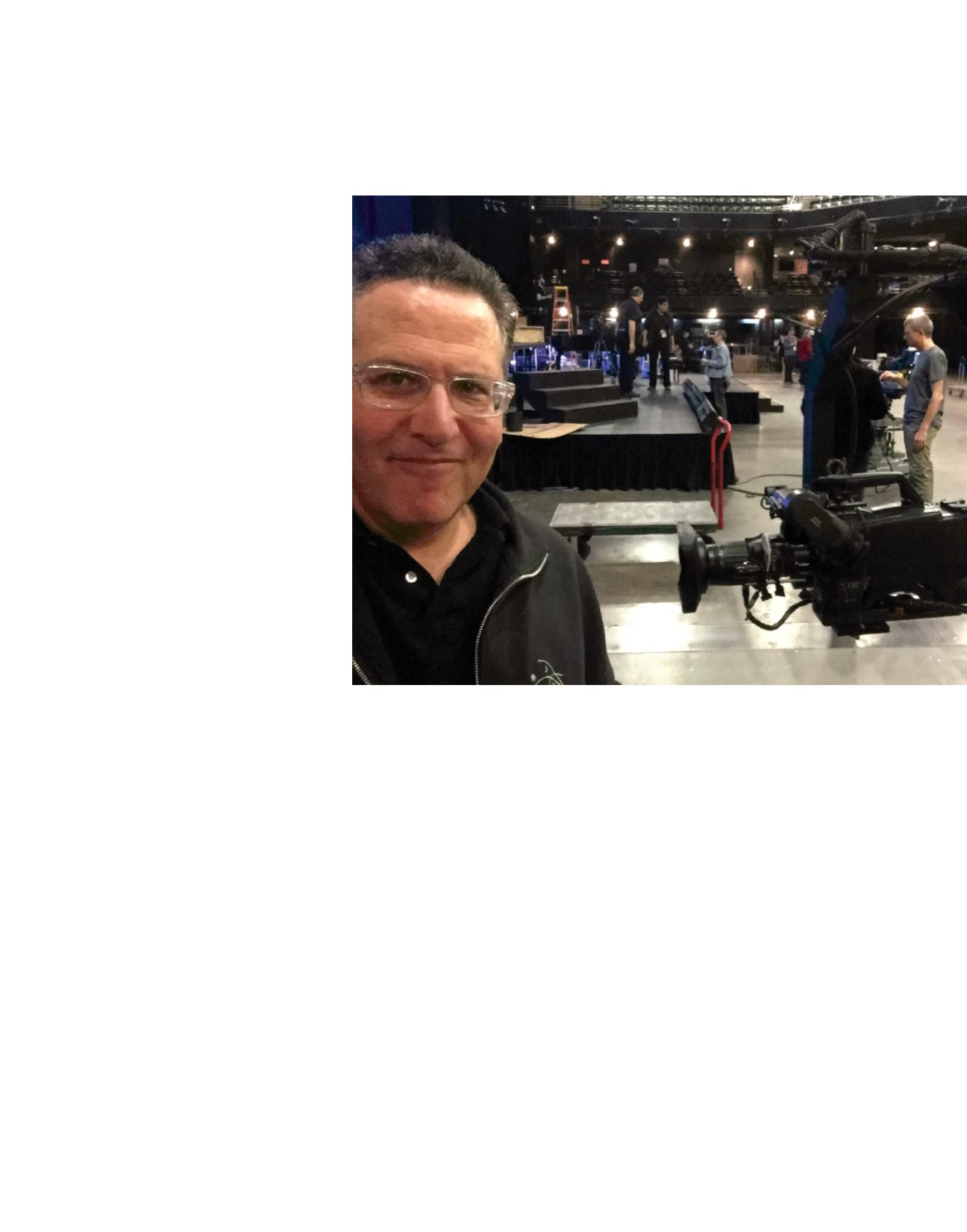
Elliott Forrest on the set of the PBS taping of
Considering Matthew Shepard,
which will be broadcast this fall.
the case. We need to be reminded, time and again, not just that
hate exists but also how powerful its antidote, love, can be.
To prepare for the TV shoot, the creative team and I had
lots of meetings on the phone and in person. I ew from New
York to Austin half a dozen times. But of all those sessions,
the most memorable was when I rst met the composer, Craig
Hella Johnson.
I’ve never met anybody like him—
part masterful composer, part spiritual
guru. Like a powerful magnet, his enor-
mous musical gi draws other talented
people to him. roughout my decades
in show business, I’ve encountered
hundreds of supremely talented people.
But Craig, more than anyone I’ve ever
known, embodies the spirit of
gratitude
,
a theme that would recur like a musical
motif throughout our rehearsals and
performances.
He was born in
in the Midwest.
At some point, he realized he was gay,
but at the time his family could not ac-
cept his sexual orientation. Not surpris-
ingly, he told me, he felt a deep personal
connection to Matthew’s story.
Together, Craig and I pored over the
entire score of
Considering Matthew
Shepard
, dissecting every line, discuss-
ing every note. He showed me how his
oratorio combines contemporary choral
singing with other elements drawn from
musical theater, country, gospel, and
blues. Even more signi cantly, he ex-
plained the inspiration behind many of
the key moments in the piece. For example, the section called
“Keep It Away From Me” evolved out of a sense—perhaps one
many of us have these days—that we just didn’t want to hear
any more bad news on TV. In contrast, he explained, “Fire of
the Ancient Heart” captures the feeling of being unable to just
“keep it away” and instead nding the inner re needed to
convert anger into action.
For most of the classical concerts I’ve created, the compos-
ers are dead, long dead. What a gi it was to sit across the table,
savoring the opportunity to explore rsthand the composer’s
intent, the meaning of each choice, and the musical homages.
My friend Rod had directed the rst stage performance of
Considering Matthew Shepard
. My job was to build on his work
by presenting it for a television audience. Because the orato-
rio does not tell the story in a linear or even a chronological
fashion, I wanted to envision camera angles and staging con-
gurations that served our goal of making Craig’s intentions
as visually clear as possible. In many cases, we decided to keep
some of the beautiful staging choices Rod originally made.
For example, the role of Matthew is played by di erent singers
(even groups of singers) in various scenes, but for continuity,
whoever is playing him wears the same shirt.
Yes, we have a real fence on the stage. e visual presence
of the fence conveys a haunting symbolic power. But, beyond
that, the “fence” actually becomes a character in the narra-
tive who sings not just one but several songs. In adapting the
staging for television, we chose to begin those songs with an
extreme close-up of the fence. is recurring image helps keep
the audience both engaged and oriented as the complex story
unfolds.
e TV special and most of the live performances during
the current tour feature members of Craig’s Grammy-winning
vocal ensemble, Conspirare (a name that translates, ttingly, as
“breathing together”). Craig lives in Austin, but he assembles
these vocalists—some of the best to be found anywhere—from
all over the country. When they’re not appearing in
Consider-
ing Matthew Shepard
, you’ll nd them performing in operas,
appearing on Broadway tours, teaching at universities, and
singing in venues around the world. Craig not only has an ear
for talent but an eye for diversity. As we worked to plot out the
camera shots, I was struck by how the faces in the ensemble
re ect what st-century America looks like.
However, staging a choral piece with singers who in some
cases have little training in either opera or musical theater
posed a unique set of challenges. One solution was to create
a series of stage pictures that evoke each scene. e stage set
consists of a series of platforms, and we explored every imagin-
able variation of ways to exploit that space (and to deploy our
cameras) so as to achieve the most dramatic e ects. I also took
on the job of designing the visual projections, which I have
SEPTEMBER 3, 2018 – MAY 11, 2019 | RAVINIA MAGAZINE
31








